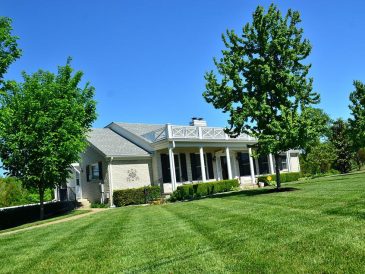Most of the plants you encounter in practically every sort of natural environment are seed plants, so-called because they reproduce by seeds. Botanists have been particularly interested in seed plants, not only because of their abundance, but also because of their diversity and usefulness to mankind. As a result, they have been studied more completely than any other plant group.
So, let’s find out more!
The Growth Process

All seed plants obviously grow. The process of growth, which results in the formation of new tissues, occurs chiefly at the tips of roots and in the buds of stems. In many seed plants a growth tissue called cambium is located in stems and roots between the two conducting tissues: xylem (which conducts water and soil nutrients upward) and phloem (which conducts foods manufactured in leaves downward). The growth activity of cambium leads to the production of new tissues transversely (crosswise) in stems and roots. Therefore it causes these organs to grow in diameter. Growth processes are influenced by many factors, including the hereditary nature of the individual plant, growth hormones, water supply, nutrient supply, temperature and light.
The Classification Of Seed Plants

Living seed plants are classified into two main groups: Gymnospermae or gymnosperms and Angiospermae or angiosperms. Gymnospermae are so called because their seeds are produced on the surface of cone scales. In the Angiospermae, seeds develop within structures called fruits. The gymnosperms are represented by comparatively few species –about 750, as against the approximately 250, 000 known species of angiosperms.
There are obvious differences between these two plant groups, in addition to the manner of seed production. The reproductive processes of gymnosperms occur in cones – of angiosperms, in flowers. Embryos of gymnosperms have more than two seed leaves (cotyledons) – those of angiosperms have either one or two seed leaves. The ovules (structures that develop into seeds) of gymnosperms bear their eggs in tiny female sex organs called archegonia –archegonia are lacking in angiosperm ovules. The xylem tissue of most gymnosperms is relatively simple; it consists mostly of vertically arranged cells, called tracheids, which conduct sap and serve as support for the stem, and horizontally arranged cells called rays and an extensive system of resin ducts. The Xylem of angiosperms is more complex. It is usually made up of several types of cells and cell groups: tracheids, vessels (long, continuous conducting tubes), fibers and parenchyma (storage) cells and rays.
The Gymnosperms Or Cone-bearing Plants

The gymnosperms are woody plants – that is, tress and shrubs. They possess roots, stems and leaves, as well as the reproductive structures called cones. In most gymnosperms, there is a dominant main stem, with conspicuously smaller branches – in some species there are no branches at all. The main stems of certain gymnosperms, such as the redwoods of California, may reach a height of more than three hundred feet. The diameters of their trunks are sometimes enormous.
The leaves of most gymnosperms are needlelike or scalelike – they contain chlorophyll and therefore carry on photosynthesis. In certain gymnosperms such as cycads and ginkgoes, the leaves are broad and thin, rather than needlelike. Most gymnosperms are evergreen: that is, they retain their leaves throughout the year and often for several years (as in pines and firs). A few species, including larches, bald cypresses and ginkgoes are deciduous. They lose their leaves in autumn, remain leafless throughout the winter and produce a new crop of leaves in the spring.
Many species of gymnosperms produce essential oils – these are volatile and highly scented. The essential oils, which appear to be waste products, are responsible for the characteristic odors of the needles and wood of many gymnosperms, including pines and cedars. When essential oils oxidize (combine with oxygen), they form extremely viscous liquids or brittle solids called resins. Resins are important raw materials of industry. They are obtained by cutting gashes into the sapwood of tree trunks. The resins ooze out of the cuts made in this way and are caught in containers. Among the most valuable gymnosperm resins are the turpentines, derived chiefly from several species of pines and used principally in the preparation of paints and varnishes.






2 Comments
Wonderful views on that!
That’s very good point